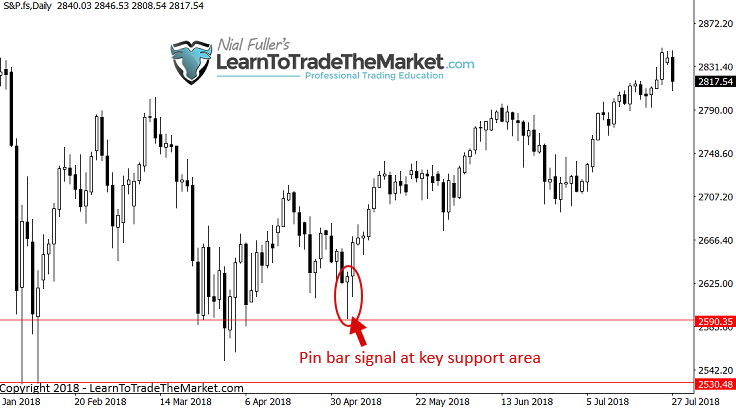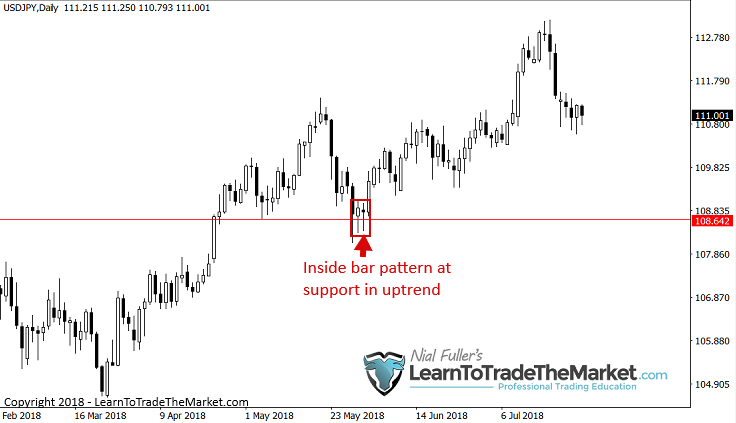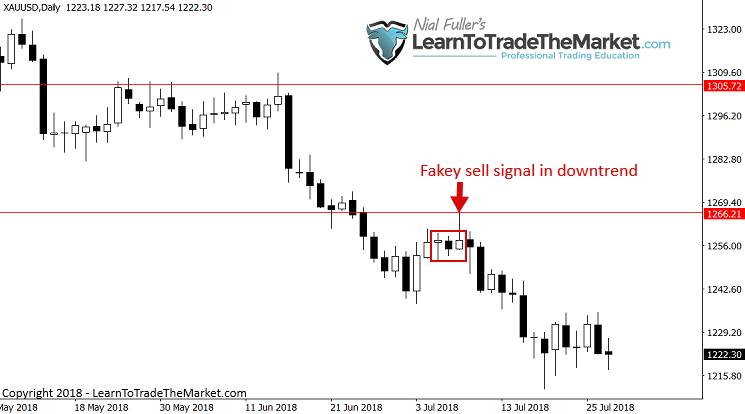[ad_1]
 Meet Bill, an aspiring trader. Bill is a 32-year-old, full-time office assistant working in the city, trying to make the most of his life the best way he knows how. He has a passion for trading financial markets and one day hopes to turn that passion into a full time profession. He loves learning about the markets, trading, investing and finance etc. However, he feels he has a major problem preventing him from moving on to the next level of success; that problem is TIME.
Meet Bill, an aspiring trader. Bill is a 32-year-old, full-time office assistant working in the city, trying to make the most of his life the best way he knows how. He has a passion for trading financial markets and one day hopes to turn that passion into a full time profession. He loves learning about the markets, trading, investing and finance etc. However, he feels he has a major problem preventing him from moving on to the next level of success; that problem is TIME.
Bill is working 40+ hour weeks and he feels like he is missing out on most of the best trade setups because he’s always working.
Don’t worry Bill, this article is for you and the many traders out there who feel just like you.
You see, you don’t have to be in front of the charts all day to trade profitably. In fact, not being in front of the charts all day should be seen as a huge advantage, for reasons we will discuss later in this lesson.
In this lesson, I am going to show you an effective part-time trading routine for people with jobs. You will see that just because you’re away from the charts a lot, you don’t have to worry, if you understand a few core points and know what to look for, you are not “missing out” on anything.
The “How” and “Why” of Part-Time Trading
Let’s start with the “why”. This one is easy. There are literally so many advantages to part-time trading it’s almost funny. I have written about topics such as “less is more” in trading and low-frequency trading as well as a set and forget trading approach, and all the advantages of this way of trading.
However, the main reason why you should consider part-time trading and learn a part-time trading routine is because it’s very easy to fit it into your already busy schedule. You don’t have to just give up on trading because you’re super busy with work, school, family or whatever it may be.
I have had the most success in my personal trading career by following the exact core principles in this lesson. It just so happens that analyzing the market less often and tracking your live trades less often is also much better for your long-term trading performance. More on this later.
How do you trade “part-time”?
Trading part-time is all about fitting your analysis and trading routine in around your daily schedule. So, if your job is a typical 9-5 work day, you can run through the charts twice a day, in the morning and in the evening. It shouldn’t take more than 10-20 minutes each time.
If you’ve followed my lessons for any length of time, you know the New York Close is the most important (and why you need New York close charts). The NY close is considered the “end” of the trading day, and we are primarily concerned with the daily chart time frames and more specifically, end-of-day analysis and trading.
Now, the New York close will vary based on what time zone you live in. If the end of the trading day falls when you’re at home and awake, you can check the markets on your laptop or other computer. As the New York close is so vitally important, if the NY close happens when you’re at work, you will need a laptop at work or a mobile trading platform to monitor the daily close. Even though I do generally discourage phone-trading, in this case, we have to make an exception as it may be the only option to catch high-probability end-of-day price action setups on the daily chart.
Essentially, your goal is to analyze the charts, potentially placing orders based on the market conditions or tweaking orders two times during the day. So, you need to make that part of your trading routine.
What else do you need for part-time trading?
Other than the proper New York close trading platform, you need to have a trading plan which is something you build after having mastered a trading strategy. It may also be a good idea to have the LTTTM members daily trade setups newsletter easily accessible for quick-reference if you’re at work. Make sure you know what time the daily New York close is in your local time, you can figure it out by checking out this time zone converter.
A Sample Part-Time Trading Routine
Let’s dissect a day in the life of “Bill”, our hypothetical trader from the intro. Bill has a full-time job and is a busy man, so he needs to trade part-time to fit it in around his schedule.
- Bill wakes up about 8am on work days, Monday-Friday. He lives London UK so unfortunately for him, that is about 3am New York time and the USA markets don’t get churning until about 8-9am NY time. So, he will already be at work when the best movement occurs. However, since we are not day trading, this is a non-issue, so please don’t view this as an issue, Bill.
- What Bill needs to already have prepared, before waking up on Monday morning, is his weekly chart analysis, which you can see an example of by viewing my weekly chart analysis. Essentially, you need to do your major market analysis on the weekend, when the market is closed. You are finding key levels, analyzing trends / market bias and taking notes for the upcoming week.
- So, when Bill gets home from work during the week, it’s usually about 6pm, which is 1pm NY time, he still has a a few hours before the NY close. He can go to the gym or do whatever. But, at 5pm NY time or slightly after, it will behoove Bill to get in front of the charts and analyze the daily chart time frames.
- At this point, he is checking to see what happened across his favorite markets that day. He is comparing the price movement against the key levels and trends he drew in over the weekend and seeing if any obvious price action trade setups formed that day. He is comparing the market’s movement against his trading plan, essentially.
- Bill may also want to check the Learn To Trade The Market members trade setups newsletter at this point, to see what trade ideas, if any, we have published for the day and to contrast this with his own analysis and trading plan. If he sees he is spotting a similar pattern / trade signal as something we discussed in our report, he may see that as an extra piece of confluence that there’s a potential trade.
- The next day, while at work, Bill may elect to check the market at the morning open, which is going to be about 11am for him. There is nothing wrong with checking the market once at work, either on your laptop or phone, just don’t make it an all-day thing. Remember, you should have 2 designated times a day where you’re checking the markets, ideally morning and evening. Make sure you stick to your pre-defined trading plan.
- This might mean you have a few good examples of ‘ideal’ trade setups with you whilst at work, so you don’t forget what you’re looking for. You should include this in your trading plan. I would even say, taking your trading plan with you to work is a good idea, to help you stay accountable and disciplined whilst away from your normal trading desk / office at home.
- Memorize the price action setups and different market contexts you want to trade. Unless those specific setups are occurring on the chart, then move on and don’t waste your time ‘hunting’ for something that isn’t’ there.
You may include example charts in your trading plan of high-quality trade setups like these:
Ideal pin bar trading pattern example:

Ideal inside bar trading pattern example:

Ideal fakey trading pattern example:

The ‘Hidden’ Treasure of Part-Time Trading
 Not only will part-time trading allow you to trade around your day-job, it also has other, ‘hidden’ benefits…
Not only will part-time trading allow you to trade around your day-job, it also has other, ‘hidden’ benefits…
I have written extensively on the value of low frequency trading, which you can read about in the previously hyper-linked article. But, to reiterate the point here, there is a sort of self-fulfilling cure for over-trading that comes with part-time trading. Since you’re naturally watching the screen less, it largely eliminates the dangers of over-trading. Traders who sit around watching the markets all day, especially with a live trade on, generally fall prey to emotional trade sabotage and trading addiction.
Part-time trading helps you avoid this for the most part, as long as you stick to your trading plan.
The real ‘work’ of trading lies in mastering the craft and learning to read the footprint of the market like a fisherman reads the changing sea conditions to better figure out where to fish.
Most of the time you spend ‘trading’ should not actually involve having trades on and pushing the ‘buy or sell button’. Most of the time should be spent learning and studying, not actually executing trades. You need to understand this early-on to save yourself a lot of time and money.
Conclusion
You don’t have to worry that you’re ‘missing out’ while you’re at work because you can trade part-time, around your day-job. This type of trading is also going to benefit you in other ways, especially with managing your emotions and not over-trading. I have long been a proponent of a “set and forget trading approach”, and part-time trading is nice complement to this.
Don’t dive into trading feeling like you must put all your eggs in one basket and trade “full-time”. You really can’t be a full-time, professional trader until you prove yourself as a successful part-time one anyways. Don’t put the wagon before the horse. Take your time, ease into this and learn, learn, learn.
The primary component of part-time trading is focusing on the daily chart time frame and learning to trade in an “end-of-day” manner, which is the core philosophy I teach in my price action trading course. Mastering this approach will grant you the flexibility to fit trading around any schedule, no matter how busy you are.
What did you think of this lesson? Please leave your comments & feedback below!
[ad_2]
Source link





